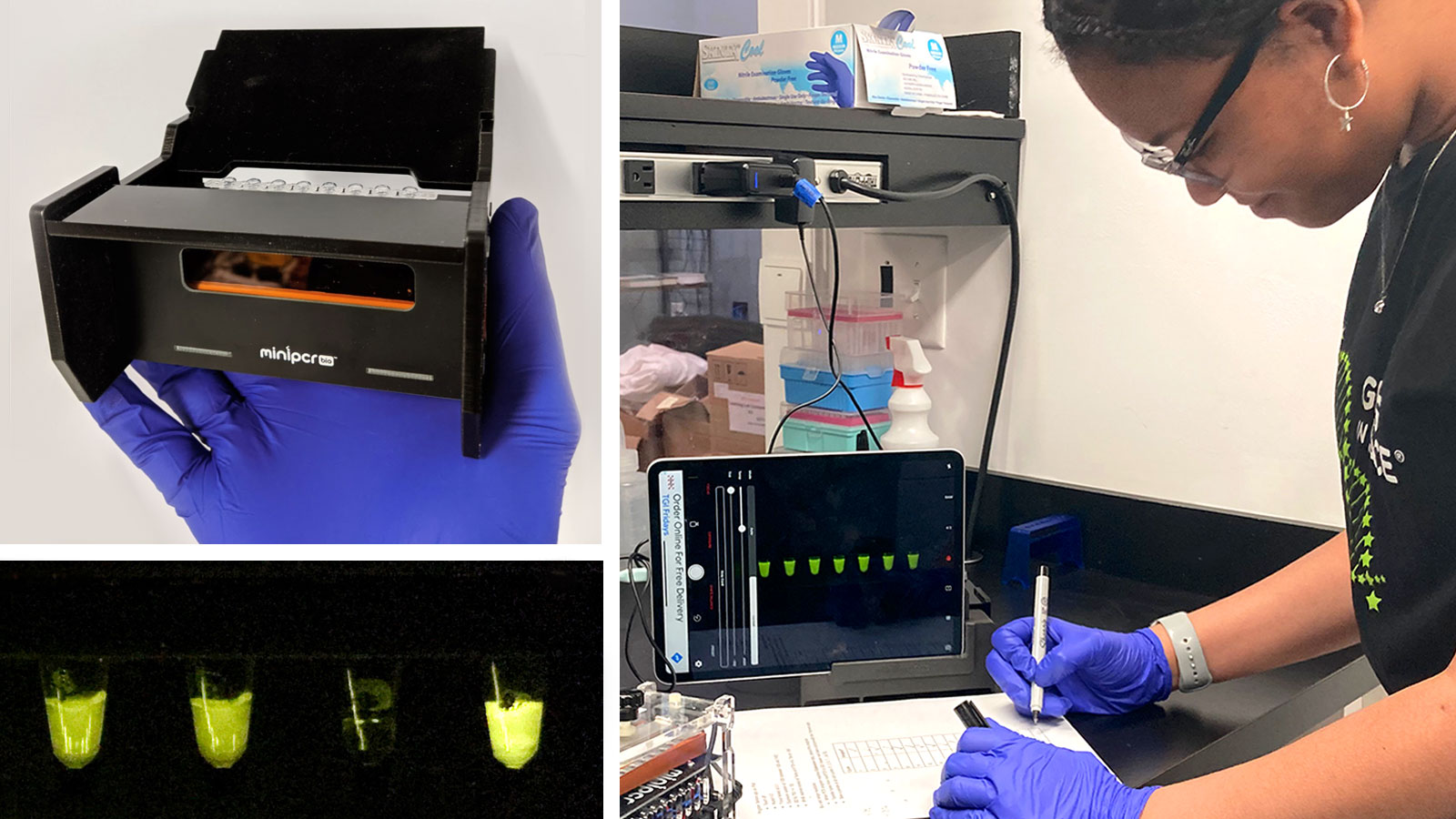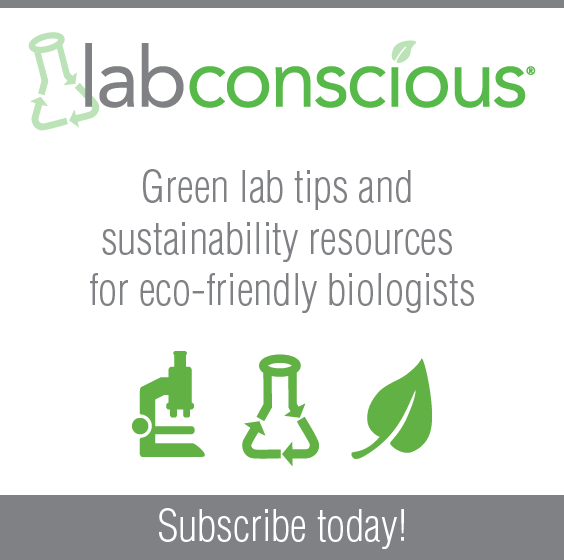
Genes in Space™ is a unique opportunity for young scientists to launch their ideas into orbit
Posted on Thursday, May 4, 2023
By
Topic: What is Trending in Science
Pristine Onuoha is a high school student who has always been passionate about biology and is a curious person by nature. So, when she learned about the Genes in Space program through her school's Women in STEM club, she was immediately intrigued. The idea of developing a research proposal related to space biology fascinated her. The fact that it was an application of biology she hadn't heard much about didn't deter her; she eagerly wanted to pursue and explore it.
Genes in Space is a free competition, founded and run by miniPCR bio™ and Boeing®, for 7th- to 12th-grade students, challenging them to come up with experiments evaluating how living things react to space conditions. Every year, about 200 schools participate in the contest, but students can enter independently with sponsorship from an adult (a teacher or parent).
Pristine began exploring ideas and came across The NASA Twins Study, a comprehensive physiological study of identical twin brothers, both astronauts, one who spent a year on the International Space Station (ISS) and one who remained on Earth. One surprising genetic level result from this study was that telomeres, which shorten with age, were observed to lengthen in space. Drawing upon her prior knowledge of biology, Pristine thought the proliferation of stem cells might underlie this process since they tend to have longer telomeres than other cell types. The panel of judges thought this was an exceptional proposal for its ability to build upon prior space biology research while taking it a step further.
During the initial round of proposals, students are afforded a significant degree of freedom in developing their experimental concepts. They do, however, need to demonstrate an understanding of the relevant scientific principles. Students design proposals that use the Genes in Space toolkit, a suite of biotechnology tools available on the ISS that includes PCR, BioBits® cell-free protein synthesis, and fluorescence visualization.
Pristine was one of five finalists selected to present her idea to contest judges at the ISS Research & Development Conference. Prior to presenting, each finalist is paired with a mentor who helps students deepen their knowledge of the scientific areas they've chosen for their proposals. At this juncture, more stringent constraints are imposed. For example, students must adjust their experimental plans to conform to feasibility constraints imposed by the space environment, such as microgravity limiting basic operations such as micropipetting.
With guidance from her mentor, Harvard Graduate Student Ana Karla Cepeda Diaz, Pristine refined her proposal, which she subsequently presented to a panel of judges at the conference. Her hard work paid off when she emerged as the 2022 Genes in Space winner.
Implementing Pristine’s experiment would require an assay to measure telomere length in space. Existing methods of assessing the length of a nucleic acid segment are not well suited to spaceflight. Gel electrophoresis, for example, requires large volumes of liquid, so cannot be used in the space environment. The task at hand became designing a proof-of-concept assay to measure DNA segment length suitable for the space context. As with so many things in science, one thing leads to another, and suddenly, Pristine's experiment took on a more impactful direction of expanding our toolkit of DNA technologies in space.
Pristine and Ana Karla collaborated with miniPCR bio scientist Dr. Ally Huang to establish a space-ready assay that could detect length differences in DNA. They combined miniPCR amplification and a fluorescence viewer from the Genes in Space toolkit to look at the length of a DNA segment with an easy-to-interpret visual readout. The fluorescence reader uses blue light to illuminate fluorescent biomolecules in a tube; more molecules make for brighter fluorescence. This is a simplified method that is relatively robust even for novice users. In Pristine’s experiment, the fluorescence viewer will be used to visualize synthetic DNA segments of different lengths as they are amplified via PCR. Earlier detectable fluorescence should indicate a greater abundance of DNA, so Pristine expects longer segments to fluoresce after fewer PCR cycles. If successful, this assay will be useful as an indicator of changes in the length of a DNA sequence.
This assay is relevant for telomere measurement, but there are also other very relevant space applications that require measuring different DNA segments. One salient application is that space travel-associated cosmic radiation can cause DNA mutations, such as insertions and deletions, which may manifest as fluorescence that is visible earlier or later than expected, using the method Pristine established.

Top left: The Genes in Space Fluorescence Viewer, which will be used in tandem with the miniPCR® to carry out a qPCR-like protocol for Pristine’s experiment. Bottom left: The fluorescent output through the viewer window when samples are illuminated inside. Right: Pristine joined the Genes in Space team in Boston at a Space Biology Camp event.
So, the initial scope of Pristine's project has expanded in a direction that lays the groundwork to create an assay that is more broadly applicable than originally thought, with far-reaching implications for bio-monitoring DNA changes in astronauts as they travel in space. The first launch window for Pristine's experiment is June 2023, when she will be present at Kennedy Space Center to see her research project lift off.
The Genes in Space competition offers a unique opportunity for students to unleash their creativity and contribute to the field of space biology. As the field is still in its infancy, these experiments can potentially make a real impact unlocking new discoveries and pushing the boundaries of science in space.
About Genes in Space
Genes in Space™ is a national STEM contest that challenges students in grades 7 through 12 to design biotechnology experiments for space. Winning experiments are performed in the International Space Station National Lab, a platform for cutting-edge research and technology development that enables future space exploration. Genes in Space™ accepts applications between January and April each year. The contest is a collaboration between miniPCR bio™ and ISS prime contractor Boeing, with generous support from the ISS U.S. National Laboratory and New England Biolabs®. To learn more visit genesinspace.org.
NEB will not rent, sell or otherwise transfer your data to a third party for monetary consideration. See our Privacy Policy for details. View our Community Guidelines.
Don’t miss out on our latest NEBinspired blog releases!
- Sign up to receive our e-newsletter
- Download your favorite feed reader and subscribe to our RSS feed
Be a part of NEBinspired! Submit your idea to have it featured in our blog.


